Welcome to our site
Welcome to the 1st CMR website; dedicated especially to those who served with the 1st Canadian Mounted Rifles in World War One; and also the 'brother' units with them in the 8th Infantry Brigade, of the 3rd Canadian Division.
With the War Diaries transcription well under way, this is a growing set of photos and artifacts that aspires to be as successful as the excellent 4th C.M.R. website (any similarity is purely intentional, and meant as a compliment). Please get in contact if you are a relative or have photos or anything to add by which to remember these extraordinary, ordinary men.
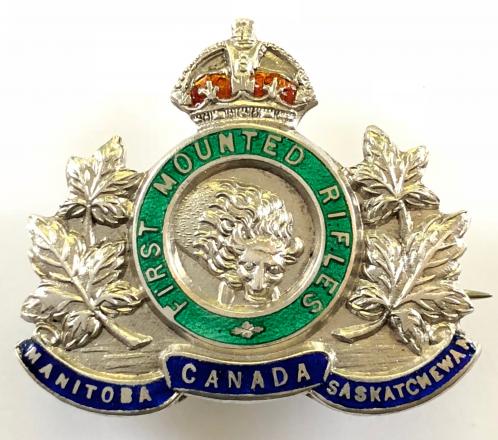
Along about sunset, I began to think of the dead. They were lying where we had to place them, with rubber capes over them. It had started to snow, but along the western horizon, away back over Mount St. Eloi and Villiers au Bois, far back westward where Canada lay, and all heart’s desire, there was a narrow magenta strip of sky.
I was standing in our newly dug trench, looking back at the sunset through the grotesque and shattered arms of the apple trees that had been the orchard of La Folie farm. And there I saw a curious figure. It was our new chaplain, Padre Davis, whom I had not yet met. He was kneeling in the mud, in the open, with his helmet off, reading from the little book.
My seargeant, Sgt. Charles Windsor, was farther along the trench. I went to him and he got two of our men with shovels. We crept out into the orchard and I chose a shell hole and they dug from it a single big grave. We had seven men to bury out of our little platoon.
While they were carrying the boys from the different parts of the orchard to this best spot, which was under a tree that I thought might some day leaf and flourish again, I went and told the padre.
But he said it would be an hour or two, and long after dark, before he could get to us, because he had so many right where he was.
“Bury them,” he said, “and if you like, say the Lord’s Prayer over them. That is your privilege. An officer may bury his men. And then in the morning, as soon as it grows light, I will come and we will hold the service over them.”
This was my first meeting with him. He was gentle, standing there in this ghastly place, the slow snow falling on his bared head, the odd last shell moaning over, and darkness folding down. I thanked him and saluted because I was so tired and trying to do the right thing.
When I got back, the boys were in their grave. The two men with the shovels were standing by, like the picture called “The Angelus.” Sgt. Windsor said I should get down in the grave, where the boys were lying under their rubber sheets, and take their personal effects, paybooks and notification disks off them. But I asked him to do it, because he was so much older a soldier than I, though younger in years. He had been in three battles. This was my first.
He climbed out and handed me the seven dirty handkerchiefs tied up into little bundles.
“Now, men,” I said, “I will say the Lord’s Prayer before you cover in the grave.”
We all took off our helmets and bowed our heads.
“The Lord’s Prayer,” I announced firmly.
And I started to remember the Lord’s Prayer.
It seemed so far away. The Lord’s Prayer, I said to myself. And my mind went wandering down all the long, empty alleys of my mind, away down lonely empty forgotten alleys, where there was nobody any more, but like a vacant house that had not been lived in for many a year.
And I could see my mind, shaped something like me, but more like a boy, a boy that grew smaller and smaller all the time it wandered down those grey forgotten corridors, and it could not find the Lord’s Prayer anywhere. I could feel the men standing there across the grave, and one of them coughed briefly.
Then, all of a sudden, I found it. The Lord’s Prayer. Why, of course. It came clearly.
“Now I lay me down to sleep,
I pray the Lord my soul to keep;
If I should die before I wake,
I pray the Lord my soul to take.
God bless father, and moth...”
There I stopped, for I knew it was wrong. All wrong. I glanced fearfully at Sgt. Windsor, and he was shaping a twisted smile at me up under his eyebrows in the gloom, but tears were on his dirt-streaked cheeks.
He nodded to me, and nodded toward the grave at our feet.
So I said: “God bless these seven men.”
The two with the shovels started throwing in the earth.
Then Sgt. Windsor took one of the shovels from them and carried on.
I laid my seven small bundles down and took the shovel from the other man.
When it was finished, it was dark.
Extract from the Wikipedia page about Greg Clark:
Memoirs of World War I
Clark’s later war reporting and reminiscences of soldiering have a poignancy uncommon to first person reflective writing about war.
Clark’s haunting memoir "The Prayer" is perhaps the definitive description of a young officer having to bury his dead after his first battle. Beginning “Along about sunset, I began to think of the dead ... “ it follows with a tight, telling description of the field interment of seven dead young Canadian soldiers. The exhaustion and shock of battle having purged the Lord’s Prayer from his memory, Clark leads his surviving men in prayer over the grave with “Now I lay me down to sleep ...”. The hardened sergeant approved. Clark had done his best to proper effect. War is about compassionate respect for one’s dead comrades “God Bless these seven men”, not punctilious memory of Orders of Service.
(La Folie Farm, at Vimy Ridge, was captured by the 2nd CMR April 9th 1917; the 5th in support. Capt.W.H.Davis M.C., the 4th CMR Padre, was killed at Amiens, 9th August 1918.)
More about Major Clark and Sgt. Windsor on the 1CMR History page - a very graphic account of Vimy Ridge.
Newspaperman, soldier, outdoorsman, and humorist. During the Great War Greg Clark went overseas as a Lieutenant with the 4th Canadian Mounted Rifles (joined in the field on 23-11-1916, later became Captain, and was Acting Major/Adjutant from 28-12-1917 to 29-8-1918. He was Struck off Strength from the 4th CMR on 2-10-1918. He won the Military Cross at Vimy Ridge, the only surviving officer in his company. He was the principle reason for the high quality of the 4th CMR Regimental Diary. (Source: canadiangreatwarproject)
http://regimentalrogue.tripod.com/blog/index.blog?start=1409544059&topic_id=1128988
A Padre in No-Man's-Land; "The Little Armistice"
Gregory Clark, "The Little Armistice," The Legionary, 1937
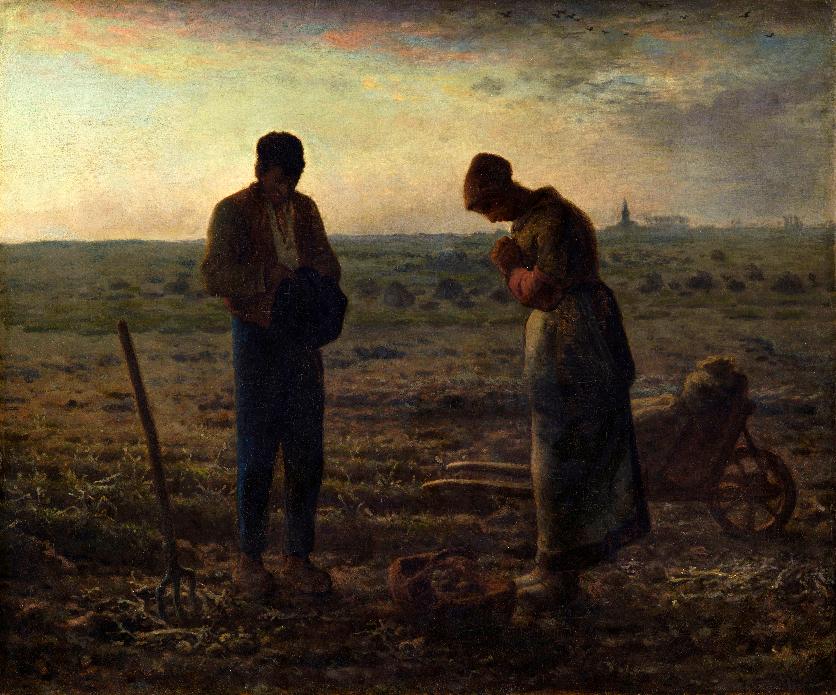
The Angelus (French: L'Angélus) is an oil painting by French painter Jean-François Millet, completed between 1857 and 1859.
"La prière" (par Greg Clark - Major Gregory Clark, 4ème CMR, 1892-1977)
Au coucher du soleil, j'ai commencé à penser aux morts. Ils gisaient là où nous devions les placer, recouverts de capes de caoutchouc. Il commençait à neiger, mais le long de l’horizon ouest, en remontant le mont Saint-Eloi et Villiers au Bois, très loin en arrière, là où se trouvait le Canada et où le coeur du cœur le désirait, il y avait une étroite bande de ciel magenta.
Je me tenais dans notre tranchée nouvellement creusée, regardant le coucher du soleil à travers les bras grotesques et brisés des pommiers qui avaient été le verger de la ferme La Folie. Et là j'ai vu une silhouette curieuse. C'était notre nouvel aumônier, Padre Davis, que je n'avais pas encore rencontré. Il était agenouillé dans la boue, à l'air libre, sans casque, en train de lire un petit livre.
Mon seargeant, Sgt. Charles Windsor était plus loin dans la tranchée. Je suis allé le voir et il a eu deux de nos hommes avec des pelles. Nous nous sommes glissés dans le verger et j'ai choisi un trou d'obus et ils ont creusé une seule et grande tombe. Nous avions sept hommes à enterrer dans notre petit peloton.
Tandis qu'ils transportaient les garçons des différentes parties du verger vers ce meilleur endroit, qui était sous un arbre que je pensais pouvoir un jour feuilleter et s'épanouir à nouveau, je suis allé le dire au padre.
Mais il a dit que ce serait une heure ou deux, et longtemps après la tombée de la nuit, avant qu'il puisse nous atteindre, car il en avait tellement là où il était.
"Enterrez-les", dit-il, "et si vous le souhaitez, dites la prière du Seigneur sur eux. C'est votre privilège. Un officier peut enterrer ses hommes. Et puis le matin, dès que la lumière deviendra claire, je viendrai et nous organiserons le service sur eux. "
C'était ma première rencontre avec lui. Il était doux, se tenant là dans cet endroit abominable, la neige lente tombant sur sa tête nue, le dernier obus étrange qui gémissait et l'obscurité qui se couchait. Je l'ai remercié et salué parce que j'étais si fatigué et que j'essayais de faire la bonne chose.
Quand je suis rentré, les garçons étaient dans leur tombe. Les deux hommes avec les pelles étaient à côté, comme sur le tableau intitulée «L'Angélus». Sgt. Windsor a dit que je devais descendre dans la tombe, où les garçons gisaient sous leurs draps de caoutchouc, et leur prendre leurs effets personnels, leurs carnets de paie et leurs disques de notification. Mais je lui ai demandé de le faire, car il était beaucoup plus vieux que moi, bien que plus jeune depuis des années. Il avait été dans trois batailles. C'était mon premier.
Il est sorti et m'a tendu les sept mouchoirs sales attachés en petits paquets.
"Maintenant, les hommes", dis-je, "je vais dire la prière du Seigneur avant de vous couvrir dans la tombe."
Nous avons tous enlevé nos casques et baissé la tête.
«La prière du Seigneur», ai-je fermement annoncé.
Et j’ai commencé à me souvenir de la prière du Seigneur.
Cela semblait si loin. La prière du Seigneur, me suis-je dit. Et mon esprit a erré dans toutes les longues allées vides de mon esprit, dans des allées solitaires, vides et oubliées, où il n'y avait plus personne, mais comme une maison vide qui n'avait pas été habitée depuis plusieurs années.
Et je pouvais voir mon esprit, façonner quelque chose comme moi, mais plus comme un garçon, un garçon qui devenait de plus en plus petit tout le temps, il errait dans ces couloirs gris et oubliés, et il ne pouvait trouver la Prière du Seigneur nulle part. Je pouvais sentir les hommes qui se tenaient de l'autre côté de la fosse et l'un d'entre eux toussa brièvement.
Puis, tout à coup, je l'ai trouvé. La prière du Seigneur. Pourquoi, bien sûr. C'est venu clairement.
«Maintenant je me couche pour dormir,
Je prie le Seigneur que mon âme garde;
Si je devais mourir avant mon réveil,
Je prie le Seigneur mon âme à prendre.
Que Dieu bénisse mon père ma mère ... "
Là je me suis arrêté, car je savais que c'était faux. Tout faux. J'ai jeté un coup d'œil craintif au Sgt. Windsor, et il formait un sourire tordu sur moi sous ses sourcils dans la pénombre, mais des larmes coulaient sur ses joues striées de terre.
Il a hoché la tête pour moi, et a incliné la tête vers la tombe à nos pieds.
Alors j'ai dit: "Que Dieu bénisse ces sept hommes."
Les deux avec les pelles ont commencé à jeter dans la terre.
Alors le Sgt. Windsor leur prit l'une des pelles et continua.
J'ai posé mes sept petits paquets et ai pris la pelle de l'autre homme.
Quand c'était fini, il faisait noir.
Extrait de la page Wikipedia sur Greg Clark:
Mémoires de la première guerre mondiale
Les reportages de guerre et les réminiscences de soldat de Clark ont un caractère poignant qui rend rare l’écriture réflexive à la première personne sur la guerre.
Le mémoire obsédant de Clark "The Prayer" est peut-être la description définitive du jeune officier qui doit enterrer ses morts après son premier combat. Commençant «À peu près au coucher du soleil, j'ai commencé à penser aux morts…», suivi d'une description concise et révélatrice de l'enterrement sur le terrain de sept jeunes soldats canadiens décédés. L’épuisement et le choc de la bataille ayant effacé la prière du Seigneur de sa mémoire, Clark conduit ses hommes survivants en prière sur la tombe avec «Maintenant, je m’endors pour dormir…». Le sergent endurci approuva. Clark avait fait de son mieux pour produire ses effets. La guerre concerne le respect compatissant envers ses camarades morts «Que Dieu bénisse ces sept hommes», et non un souvenir précis des ordres de service.
(La Folie Farm, sur la crête de Vimy, a été capturée par la 2ème CMR le 9 avril 1917; le 5ème en soutien. Le Capt.W.H.Davis M.C., le 4ème CMR Padre, a été tué à Amiens le 9 août 1918.)
En savoir plus sur le major Clark et le Sgt. Windsor sur la page d’histoire de la 1CMR - un compte très graphique de la crête de Vimy.
Journaliste, soldat, amateur de plein air et humoriste. Pendant la Grande Guerre, Greg Clark partit outre-mer en tant que lieutenant avec le 4ème Canadian Mounted Rifles (rejoint le 23-11-1916 sur le terrain, puis Capitaine, et fut commandant par intérim / commandant adjoint du 28-12-1917 au 29-8- 1918. Il est radié de la 4e CMR du 2 au 10-1918 et remporte la Croix militaire de Vimy Ridge, seul officier survivant de son entreprise, ce qui explique en grande partie la grande qualité du journal de régiment de la 4e CMR. (Source: canadiangreatwarproject)
A note from Major Cyril William Upton Chivers (D.S.O., M.C.) October 23rd, 1939, writing from Winnipeg:
"This keeps you up to date as to old members of the unit. We feel a little out of the war. While one Division is evidently leaving inside of two months. There seems little enthusiasm or desire on part of lads to join up. The spirit is with returned lads however, who would mostly like to be in it again. Good luck, and may the war be decisive & short".

Lapel Badge above, distinguishing shoulder patch below, and an original 5th CMR patch below that - same colours, just a square instead of a circle. See: http://www.kaisersbunker.com/ceftp/patches.htm and (http://www.kaisersbunker.com/ceftp/index.htm), and from Mike Brown - an original 1st CMR patch, below that.

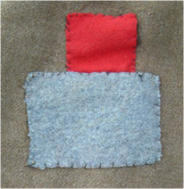
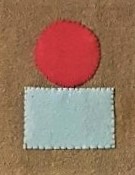
3rd Canadian Division Insignia
Beginning in mid-1916, the Division adopted a system of coloured Battle Patches which were worn on both sleeves of the Service Dress jacket as well as the greatcoat. A rectangle 2 inches tall by 3 inches wide in black was adopted to distinguish the 3rd Division from other formations of the Canadian Corps. In short order the colour was changed to French Grey. Coloured geometric shapes used in combination with the divisional patch distinguished individual formations, units and sub-units within the division. The markings were also seen painted on steel helmets, vehicles and used as road signs.
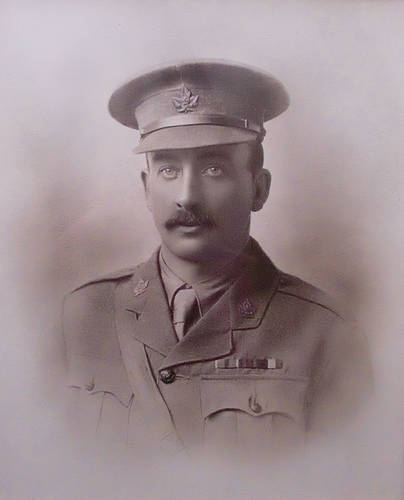
About Us
Peter Edward Maxfield is one of the grandsons of the above Lieutenant-Colonel Walter Edward Maxfield D.S.O., who was born in Salisbury, England on the 20th Sept 1877. He emigrated to Canada in 1893 at the age of 15 to farm. A long military career included: Manitoba Dragoons from 15th June 1897; Imperial Yeomanry 1900-1901; North West Mounted Police 1902-1907; 12th Manitoba Dragoons until 1914; 1st Canadian Mounted Rifles 1914-1919; LDV (Local Defence Volunteers) 1940; Mobile Column, 7th Wiltshire Home Guard until 1943.
Link to Flickr set 'Walter Edward Maxfield DSO 1877 - 1964': http://flic.kr/s/aHsjqVAqSp
You can click on 'Actions' then 'View all sizes' to see large images there.
Link to 'Memorable Manitobans' Page: http://www.mhs.mb.ca/docs/people/maxfield_we.shtml
The literal translation, and one that I see online, comes out as: 1er (Battaillon) fusiliers de canadiens à cheval; but in the Canada Gazette of 1919 the title is: 1er carabiniere à cheval canadiens.
Une tentative de traduction - s'il vous plaît me corriger:-
1er carabiniere à cheval canadiens
* Accueil
* Galerie
* Histoire 1er C.C.C.
* In Memoriam
* Liens
* Les autres unités CCC
* Guerre des Boers CCC
* Livre des visiteurs
Bienvenue sur notre site
Bienvenue sur le site 1er CCC; dédié à ceux qui ont servi avec le 1er Carabiniere à cheval canadiens , dans la Première Guerre mondiale.
Avec la transcription des journaux de guerre en bonne voie, il s'agit d'un ensemble croissant de photos et d'artefacts qui aspire à être aussi réussie que l'excellent 4e CCC site web (toute ressemblance est purement intentionnelle, et conçu comme un compliment). S'il vous plaît entrer en contact si vous êtes un proche, ou vous avez des photos, ou quelque chose à ajouter par lequel se rappeler ces extraordinaires, mais des hommes ordinaires.
Insigne de revers ci-dessus, insigne d'épaule distinguer ci-dessous.
http://canadianmountedrifles.yolasite.com/
Une note du major Cyril William Chivers Upton (DSO, MC) le 23 Octobre, 1939, écrit de Winnipeg:
"Cela vous tient au courant pour les anciens membres de l'unité. Nous nous sentons un peu hors de la guerre. Bien que l'on est évidemment la division en laissant l'intérieur de deux mois. Il semble peu d'enthousiasme ou le désir de la part des gars à s'engager. Le esprit est avec les gars retourné toutefois, qui serait la plupart du temps, comme d'être en elle de nouveau. Bonne chance, et peut-être décisif de la guerre et court ".
A propos de nous
Peter Edward Maxfield est l'un des petits-fils du lieutenant-colonel Walter Edward Maxfield DSO, qui est né à Salisbury, en Angleterre, le 20 septembre 1877. Il émigra au Canada en 1893 à l'âge de 15 ans à la ferme. Une longue carrière militaire incluse: 12th Manitoba Dragoons du 15 Juin 1897; Imperial Light Horse 1899; Imperial Yeomanry 1900-1901; North West Mounted Police 1902-1907; Dragoons 12e jusqu'en 1914; 1st Canadian Mounted Rifles 1914-1919; LDV (défense locale Les bénévoles) 1940; colonne mobile, 7e Wiltshire Accueil Garde jusqu'en 1943.
Premières médailles sur ce portrait: 1902 Médaille du couronnement d'Edouard VII, De la Reine Afrique du Sud Médaille, Du Roi Afrique du Sud Médaille.
Lien vers Flickr set 'Walter Edward Maxfield DSO 1877 - 1964: http://flic.kr/s/aHsjqVAqSp
Vous pouvez cliquer sur "Actions" puis "Afficher toutes tailles" pour voir de grandes images là-bas.
Lien vers la page «Les Manitobains mémorable: http://www.mhs.mb.ca/docs/people/maxfield_we.shtml
petemaxfield@hotmail.com
ou aller à la page livre des visiteurs.